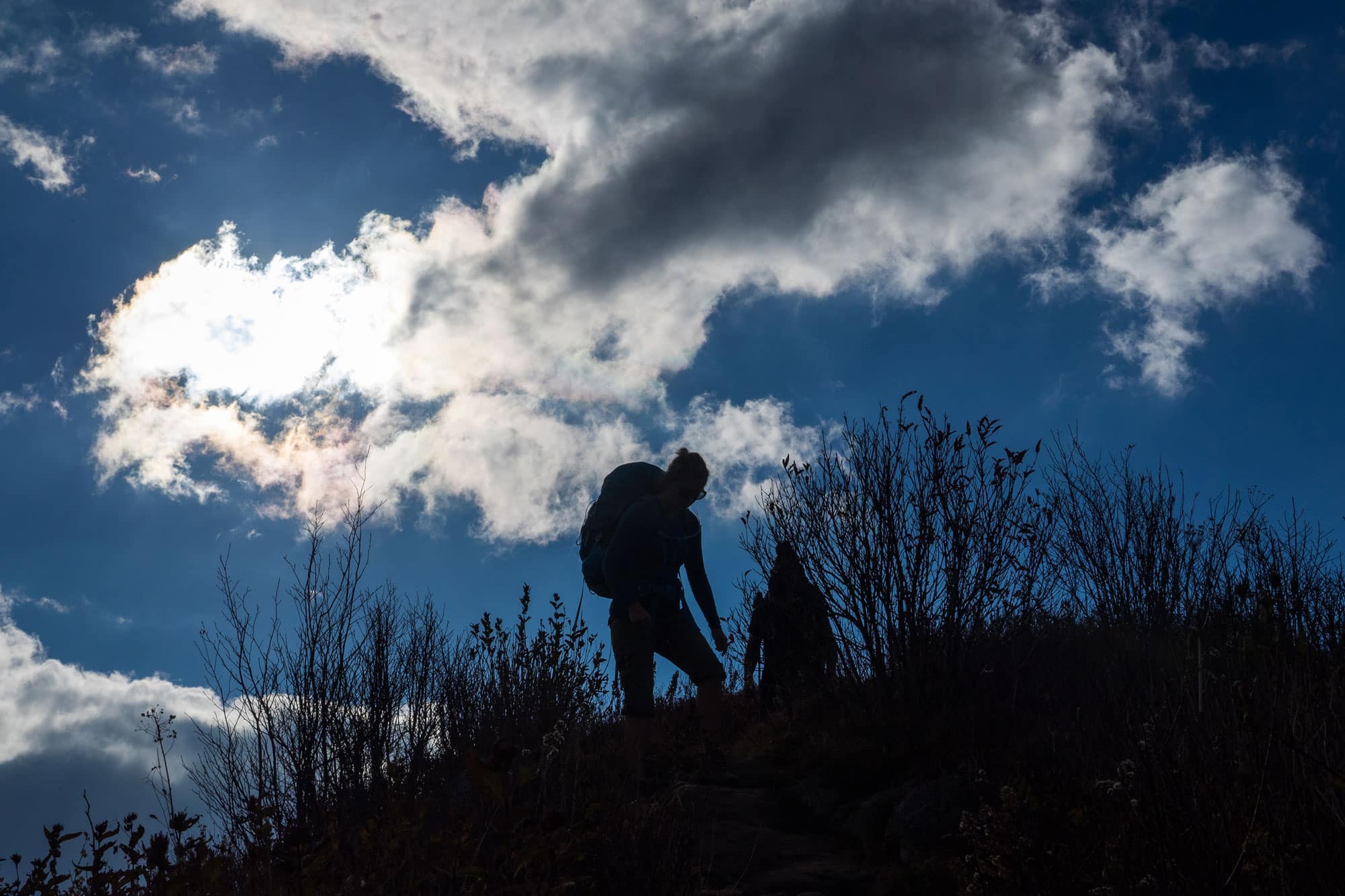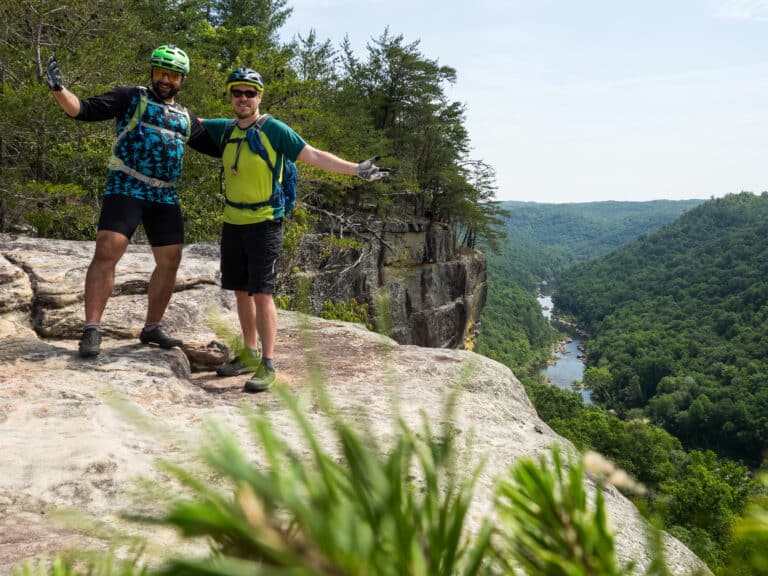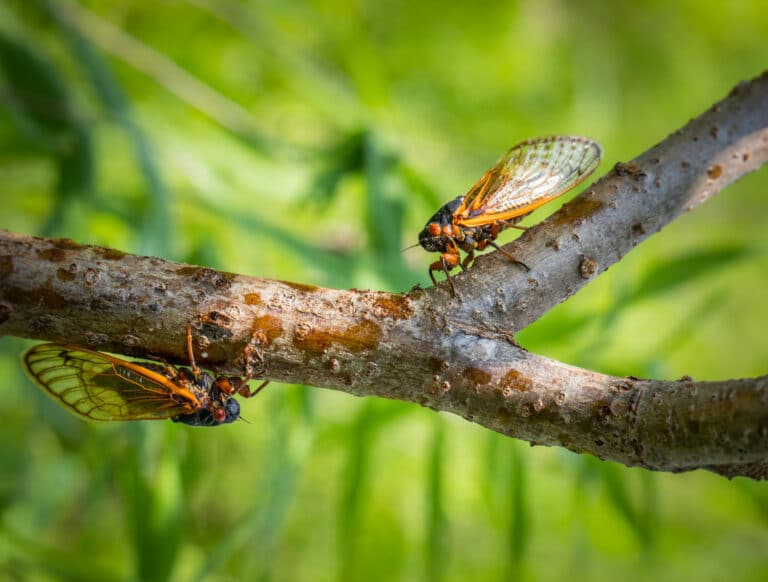For some novice backpackers, the fall scenery was beautiful, but otherwise this adventure wasn’t pretty.
Leaves crunched under our boots as we hiked along Flat Laurel Creek Trail. It was mid-October, and the fall colors were somewhat late and muted for the time of year. Luckily, some pockets of foliage throughout the forest were putting on a scenic show.
We were high in the Great Balsam Mountains on the first afternoon of a two-night backpacking trip. This subrange of the Blue Ridge mostly falls within Pisgah National Forest, roughly between Great Smoky Mountains National Park and Brevard, N.C. I was leading the way like I used to as a college wilderness guide. This was my wife Ina’s second time backpacking; her first trip was the previous May, in Bryce Canyon National Park in Utah. Our friends, married couple Boberts and Bridget, had never been backpacking, so we’d loaned them old packs to give it a try.
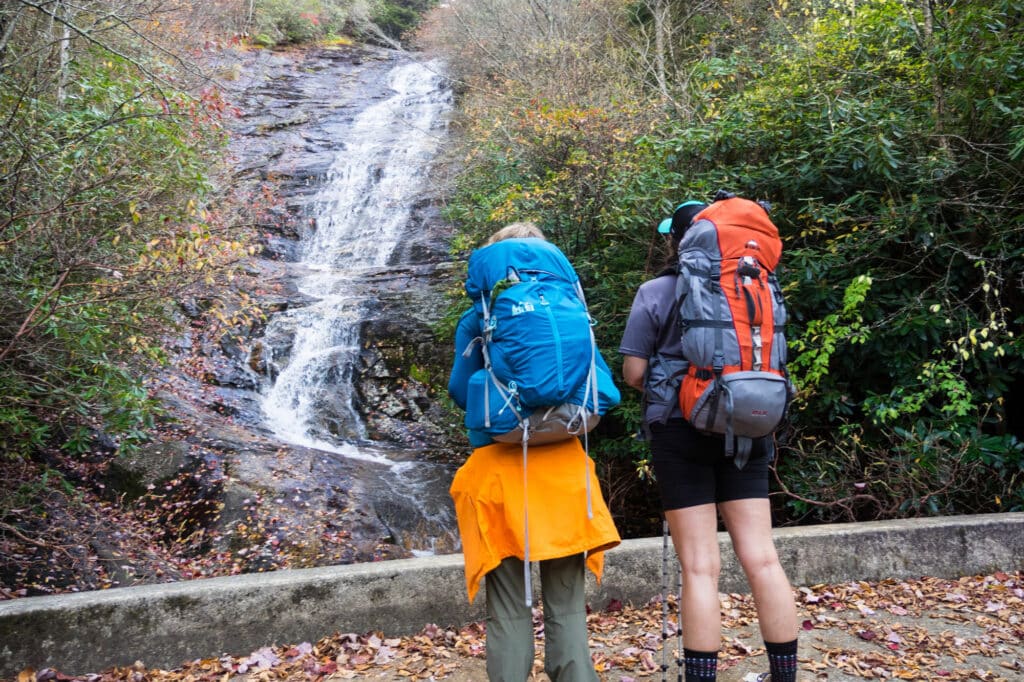
In recent years, Boberts and I had done a lot of multiday bike trips. Ina is from Germany and her village just happens to be in a narrow river gorge on a famous long-distance cycling route. This inspired us to pick up two hybrid bikes for traditional touring with racks and panniers. With Boberts and Ina alternating between trips, we’d ridden thousands of kilometers on many top routes across the country, including the Rhine Gorge, the old East-West Inner Border, and the foothills of the Alps.
During one such trip, Boberts and I found ourselves on singletrack trails like those we rode back in the States. This inspired us to join the growing sport of bike-packing by outfitting our mountain bikes with bags for the frame, seat post, and handlebars. One day, while riding together, a thought struck me.
“Boberts,” I blurted. “Have you ever been backpacking? The sport that bike-packing evolved from?”
“You know, I haven’t,” he mused, seemingly surprised by the oversight. “But I’d like to.”
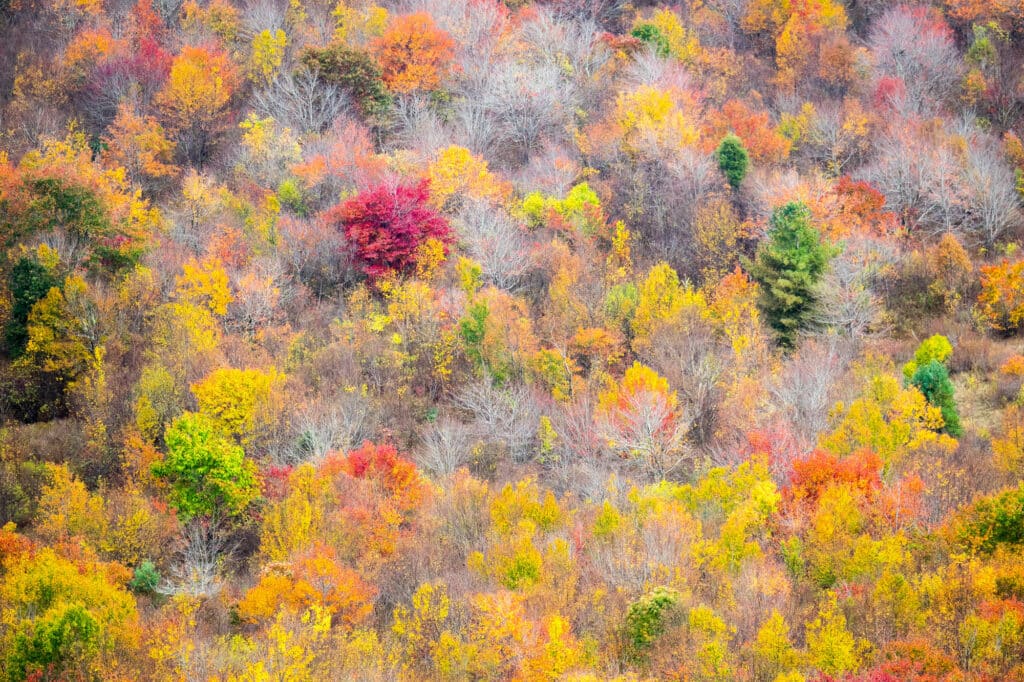
So we decided it was time to swap bikes for boots. Of course, by now I’d learned a lot about Boberts’ adventure quirks. While he’s a beast on a mountain bike, he is—how do I say this—less than graceful on two feet. He’s also a classic over-packer. One day while bike touring along Lake Constance, shortly before climbing into the Alps, he braked hard at a yard sale and began collecting Bavarian beer mugs. I convinced him not to smash four hunks of heavy glass inside his paniers, and I don’t think he ever forgave me.
Sure enough, when we met up at the Flat Laurel Creek trailhead near the Blue Ridge Parkway, Boberts quickly filled my old college pack. All seventy liters, plus the fifteen-liter extender, which is meant for long-distance thru-hikes, not mellow weekend outings.
“Sure you need all that stuff?” I inquired innocently, warning him against taking things just because there’s space.
Boberts glared at me and muttered a yes, so off we went. We hiked a leisurely three miles to camp, stopping often to chat, adjust packs, and admire sights like Wildcat Falls. A grunting Boberts drifted toward the back, frequently doing the backpacker shimmy under the shoulder straps, trying to get balanced and comfortable. My best guess was he had four sets of clothes, a beach towel and umbrella, and maybe a set of encyclopedias.
We picked a nice campsite above the creek in a wooded valley between Sam Knob and Little Sam Knob. While building tents, we heard a loud group approach, possibly dragging logs. Turned out to be a plastic rolling cooler bouncing over rocks with the 12-ounce contents sloshing inside. Despite our lack of cooler, our jealous group had a fun night. Eating dehydrated meals. Taking snorts of whiskey. Chatting about trips and plans for tomorrow.

Guide Tricks, Bald Peaks, and Tent Couples
On Saturday morning we followed the creek past its headwaters and ascended to Black Balsam Knob Road. By now, Boberts was ready to shed weight. Recalling an old guiding trick, I’d planned our route like a figure eight, so that we passed our truck on the second morning. That way, anyone could off-load anything they regretted taking. With lightened loads, we turned uphill.
A mile ascent on the Art Loeb Trail, with 400 feet in elevation gain, led us up Black Balsam Knob to a panorama of rolling mountains and ridges. The reason for the wide-open view is that this peak is an Appalachian bald, a summit mysteriously free of trees and mostly covered by grass or shrubs. It’s unclear why some peaks are bald while others nearby are wooded. Various origin theories propose megafauna, human clearing, stock grazing, or a combination of factors. Continuing over a mile along a high ridge took us atop Tennent Mountain. Descending the backside, another mile led to Ivestor Gap where we turned into the Shining Rock Wilderness on Greasy Creek Trail.
It was 5 PM, and I increasingly found myself out ahead. The others were moving slowly, perfectly normal for a first or second trip. They took frequent breaks to rest or pump water from side creeks. My goal had been to reach the East Fork Pigeon River. But the strained faces suggested my planned six-mile day wasn’t realistic. If Boberts’ quirk is overpacking, mine is chronically over-estimating how much mileage can be covered in a day.
With dusk approaching, we surveyed our water containers and found we had enough to dry camp. Reluctantly, we diverted into a grotto in dense foliage, and we broke into tent couples. Their strategy was to set up together, involving a great deal of debate about things like equitably orienting the doors, sliding in poles without stabbing each other, and finding the bag of stakes that were here a moment ago.
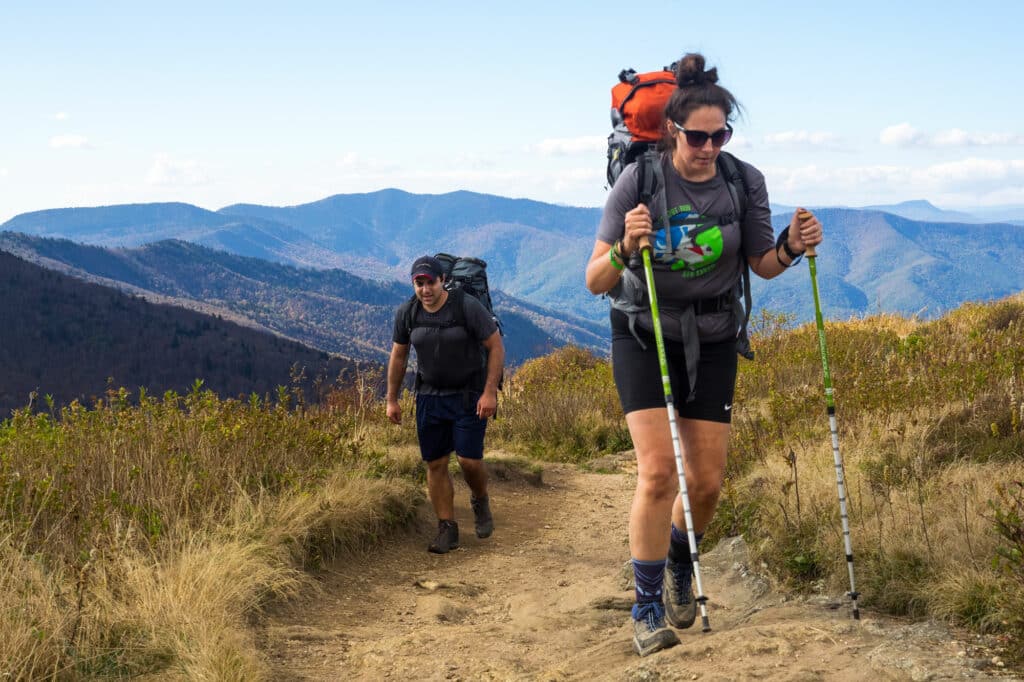
Ina and I used to set up our tent that way, and I’m surprised the fabric didn’t melt from all the friction. We eventually found, at least for us, that it goes much better if I build the tent. Then she goes in and sets up the bedding. I was drinking whiskey in my camp chair before Boberts had his rainfly right side out.
“Jealous?” I joked.
“Very,” he declared from under a pile of nylon.
Despite the makeshift camp, it was another fun night in the woods. Our wives smartly went to bed early while Boberts and I stayed up way too late, brainstorming plans for new adventures.
Creek Crossing and Parkway Hitching
Setting out on our final morning, an easy half-mile downhill led to several pristine campsites by a rushing creek. Had we pushed 20 minutes farther yesterday evening, one could’ve been ours. Instead, a solo backpacker swung in a hammock with the picturesque place to himself.
The original plan was to hike two miles out to a trailhead off the Blue Ridge Parkway. Then we’d turn uphill on a four-mile section of the cross-state Mountains-to-Sea Trail along Graveyard Ridge above the Graveyard Fields. To me it still seemed possible. The others had a different perspective.
“Sounds horrible.”
“Kill me now.”
“Think any graves are available in those fields?”
Message received. Regardless, the decision was settled at our final creek crossing. Bridget had brought trekking poles, which were a big help the day before when stepping across wet rocks. Ina and I agreed we’d do the same next time. But this final crossing had a fast chute, so I decided to jump. Once across, I was dropping my pack when I heard shouts. Boberts had lost his footing. Now Bridget and Ina were clutching his pack, while he dangled with his legs in the current.
It was a comical position but not dangerous, given the smooth chute dropped into a shallow pool. I had to think quickly. Grab my camera or go help? Sadly, the guide instinct kicked in, and I missed the shot. The only option was what kayakers call a wet exit. Boberts squirmed out of the shoulder straps and slid into the pool, where he landed standing in knee deep water.
“If only you could clip into the ground,” I lamented.
Given Boberts’ soggy boots, the best choice was to hike to the road and hitch to our vehicles. For whitewater paddlers like us, thumbing a ride next to a river is pretty common. But up on the busy Blue Ridge Parkway around milepost 417 during a mid-October Sunday, this didn’t go so well. The first few drivers just stared or rolled up their windows. One guy quietly shook his head. An alarmed family that I approached literally peeled out in front of me with tires squealing. Boberts and I joked that we should have carried PFDs to sling over our shoulders, a common signal between paddlers looking for a ride. Eventually some friendly hikers took pity and let me and Boberts hop in.
We were all backpackers now. Hitchhikers, too.
Cover Photo by Mike Bezemek
